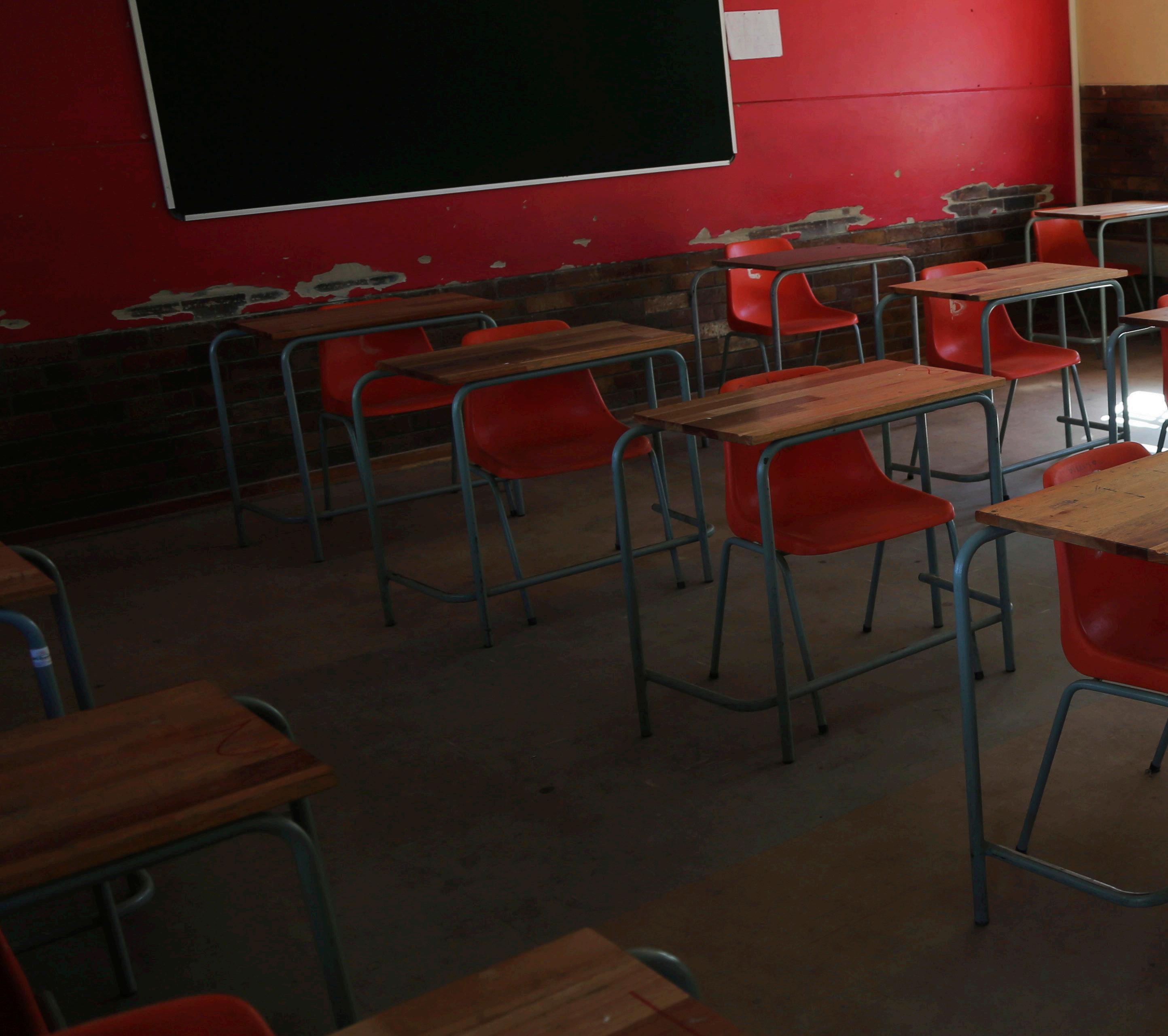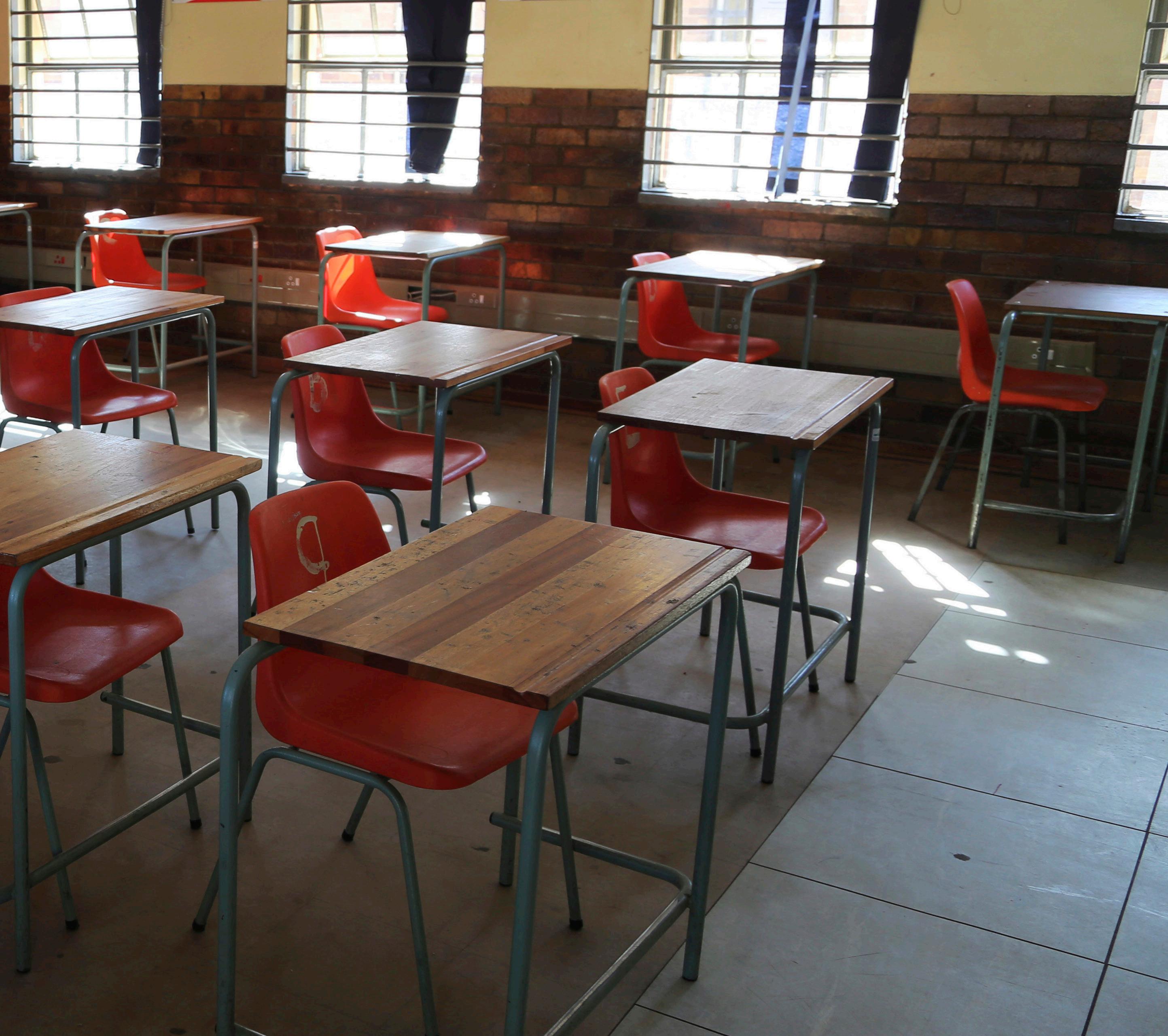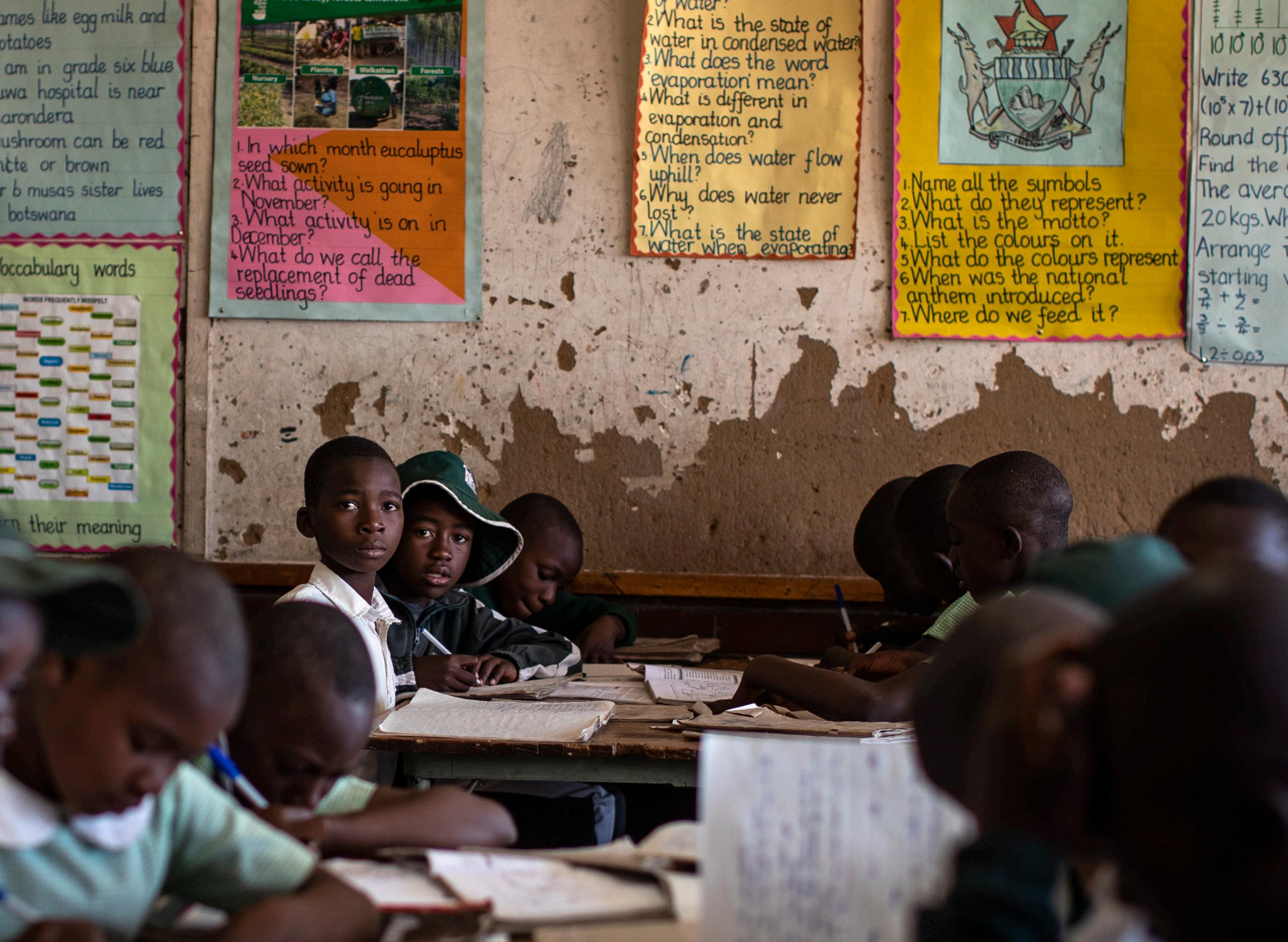
15 minute read
ENDING POVERTY IN AFRICA WITH ONLINE EDUCATON
ENDING POVERTY IN AFRICA WITH ONLINE EDUCATION
Eric Li Staff Writer
Advertisement
Education plays a critical role in ending poverty. For example, the winners of the Nobel Memorial Prize in Economic Sciences in 2019 Abhijit Banerjee and Esther Duflo found that schooling increases earnings relatively linearly, in that each additional year of primary education adds about eight percent to earnings for a child: over the standard six years of primary schooling, income would increase for a child by about 50 percent. These gains are especially important in sub-Saharan Africa, which has the highest out-of-school rates for all ages; 33 million of the 61 million global out-of-school children live in the region.
Despite the large benefits of widespread increased education, the logistics of education can be difficult. In an analysis of seven African countries, United Nations Children's Fund (UNICEF) found that on the average school day, a fourth to a half of the teachers are absent, which results in a wasted school day for the students who do attend and lowers the actual effects of going to school. Moreover, barriers in attending school, such as fees, traveling time, and child morbidity, prevent out-of-school rates from decreasing.
Online Education
However, these roadblocks are not insurmountable. Online education has been on the rise in sub-Saharan Africa due to it

Mabuya Secondary School. Johannesburg, South Africa. May 2020.
being a cost-effective alternative to formal education as well as a way to widen educational opportunity. Already, this transition is being felt in the higher education category. Africa’s public universities are wrestling with expanding capacity without sacrificing quality which has allowed online-based institutions such as Unicaf, a pan-African university, to assert itself in the education system. Unicaf provides every student with a tablet and downloadable, offline course materials. A similar program in India, the Indira Gandhi National Open University, educates over three million students. In light of these case studies, online education could serve as a powerful tool for poverty reduction.
Tackling Barriers to Education
The primary reason that online education is so popular is for the convenience advantages for students. Specifically for students in poverty, online education tackles a number of barriers including travel time, school cost, and labor schedule.
In their book, Improving Primary Education in Developing Countries, the World Bank describes how the most important determinant of primary school enrollment is proximity. This insight has also been corroborated by the Jameel Poverty Action Lab’s (JPAL) studies, which have shown that creating local schools resulted in very large gains in enrollment as many ar
eas with low enrollment rates are remote and affected by conflict. At the moment, 27 percent of school-age children in sub-Saharan Africa live more than two kilometers away from the nearest school, and the World Bank estimates that if these distances were reduced to less than two kilometers, their enrollment rates would rise by 15 percentage points. Clearly, the virtual aspect of online education would remove this issue of travel time and locality.
As an alternative to tax-based funding of education, a number of sub-Saharan African countries implemented school fees. However, they paid insufficient attention to the effect of these fees on access to education for the poor, which led to decreased primary school enrollment, especially among the poorest and most vulnerable children. In fact, a randomized controlled trial by Innovations for Poverty Action showed that students whose school fees were removed were 55 percent more likely to complete secondary school. Similarly, JPAL revealed that even reducing other schooling costs such as by providing free school uniforms or school meals also had positive impacts on attendance. Comparing the costs of universities in sub-Saharan Africa, it is clear that online institutions clearly win this competition; Unicaf costs US$4,000 for a degree compared to the average of US$3,000 per year of traditional universities. This suggests that, at least at the college level, online education is a very viable way to minimize costs.
The UN Educational, Scientific, and Cultural Organization (UNESCO) reported that about a quarter of five to 14-year-olds in sub-Saharan Africa were engaged in child labor in 2004. These working children faced attendance disadvantages of about 30 percent to 67 percent. Moreover, because a majority of the child laborers are working on subsistence agricultural farming for the family, online classes would also facilitate the education of those who have to farm during the school day so they can take classes later in the evening. The UN Girls’ Education Initiative also describes how for young girls, sibling care is a major barrier to education. Considering the gender gaps between school completion—36 percent for girls and 42 percent for boys—in sub-Saharan Africa for lower secondary school, online education offers hope of leveling the playing field. By having the ability to enroll in online courses, young girls would be able to learn at their own pace and on their own hours rather than on a rigid school day schedule.
Concerns
Despite these benefits, there are a number of logistical concerns with the feasibility of extensive online education in sub-Saharan Africa.
One of the primary concerns is Internet access: a fundamental part of online education is the online part of it. Sub-Saharan Africa has the lowest Internet penetration of any region in the world at just 40 percent. Moreover, the gaps between Internet usage varied with income, up to a 29 percentage point difference between high- and low-income earners in certain countries. Considering these lower Internet penetration rates, online education would be less suited to tackle the poorest of the poor, but could benefit those on the higher end of the poverty spectrum. However, these rates could change soon. A number of companies are working to bring universal Internet access across the globe. For instance, the US Federal Communications Commission recently approved aerospace company SpaceX to launch more than 4,000 satellites into space as part of their universal satellite Internet program Starlink. A number of other companies such as Amazon and Facebook are also pur-

suing these types of satellite Internet plans.
Moreover, the quality of online education is another concern. In a report last year about online education, researchers at George Mason University revealed that, though general learning outcomes are similar for online and in-person courses, at-risk populations such as those of lower socioeconomic background underperform in the online setting as compared to the traditional setting. They suggest that those who are the most disadvantaged may end up experiencing a lower quality of education, because traditional classes offer valuable instructor-student interaction whereas online education does not. Because schooling quality has significant impacts on later earnings, decreased quality of online education may diminish the effects that receiving an online education would have regarding social mobility.
Unfortunately, most online education in sub-Saharan Africa is at the tertiary education level, but only about 9 percent of the population even enrolls in tertiary education with only 23 percent of the population completing upper secondary education. Truly tackling the barriers of education would involve increasing digital education opportunities for lower levels of education because that is where the most impact is needed.
An Interconnected World
Ultimately, online education is an increasingly utilized, but still underused tool for tackling a lack of educational attendance in sub-Saharan Africa for its benefits of no travel time, cheaper costs, and flexible hours. However, concerns such as the existing digital infrastructure, quality of schooling, and targeted student population suggest that it alone is not enough to drive a welfare revolution in sub-Saharan Africa.
Online education may not end poverty, but it is a leap in the right direction, a critical tool for tackling inequality in the 21st century. H
Schoolchildren attend a class taught in the Shona language. Norton, Zimbabwe. September 2019.

HARVARD INTERNATIONAL REVIEW
Feminists celebrate after a barrier is pulled down during a protest on International Women's Day. Mexico City, Mexico. March 2020.
GENDER VIOLENCE IN MEXICO
MACHISMO, FEMICIDES, AND CHILD’S PLAY Ines de la Morena Staff Writer

The year was 1993. In Ciudad Juarez, Mexico, the streets were empty, soaked in blood, with corpses hidden from plain sight. Twelve young girls and women had just been murdered, their bodies discarded like garbage after violence and abuse. Disposal was simply an afterthought for their perpetrators.
Tragically, there are a thousand stories like this one. Through the years, Mexico has seen everything: women stabbed, skinned, disemboweled, raped, and murdered. Little girls have been kidnapped from their preschools in broad daylight, corpses have often been discarded in canals, and at times. Girls as young as three and women as old as 74 are frequently abused and killed by men close to them. In the next ten minutes, approximately three women in Mexico will have been a victim of abuse. Ten femicides will occur by the end of the day.
The term femicide is not homicide of those that simply happen to be female, but rather females who are murdered because of the fact that they’re female. Ingrid, Nancy, Susana, Noelia, Laura, Malena, Adriana, Isabel, Yuritzi, Luz are just a few names in a long list of victims. A culture of violence is not one that can change overnight even if laws were to suddenly change. So, how did this culture develop?
History and Gender Roles
The causes of gender violence are so much more complex than simple biology, and there is certainly no singular explanation. Rather, a diversity of factors have built upon one another. Some historians identify La Conquista, during which Spanish colonizers such as Hernán Cortes and his conquistadors arrived in the American continent and raped indigenous women, as the beginning of a culture of gender violence. La Conquista created “mestizos” or people with shared Spanish and indigneous ancestry. Psychologists suggest “mestizaje” creates a condition where mestizos “[envy] their Spanish father and despise their Indian mother—in cases as a result of his Oedipal complexes.”
For most historians, however, there is little doubt that sexism in Latin America was heightened by European colonization. In the French Civil Code, which inspired much of early Mexican law, women were listed as dependents of men in all aspects of life from the law to finances. In line with European thinkers of the time, the general consensus in Mexico was that women were more well-suited to the domestic sphere as opposed to men who were born to think and act as independent agents.
From this, machismo was born in Latin America. Machismo, similar to toxic masculinity, is the set of ideals and beliefs that support the notion that men are superior to women. Men assume a dominant role in society where they may show little weakness and must protect the vulnerable, usually by exercising control over women. Because of this, women have been forced into more subservient roles in society for generations. Carmen Contreras, a government researcher for Instituto Mexicano de Investi
gación de Familia y Población (IMIFAP), elaborates that “machismo” paved the way for gender-based discrimination, which results in disparities in opportunities from a young age. These disparities range from education to labor, even skewing female representation in art where strong female characters are often absent in movies. Frustration with machismo is reflected in La Revuelta's, the first female-run feminist newspaper in Mexico, writings, “The movement arose… from the disenchantment, the dissatisfaction, the frustration that we, as women, experience in the isolation of everyday life, emerges the need to unite with other women, at first perhaps as pure instinct… the issue of women’s oppression is considered a secondary, subordinate problem that ‘will be resolved after social change.’ ”
Despite feminist agitating, there are still tangible gender inequities in Mexico. To this day, there are 30 percent more men in corporate roles than women; women spend an average of 40 hours a week in domestic duties while men only spend around ten; and 75 percent of men report being the head of the household. Despite the recent strides towards increased economic equality, as Mercedes Olivera explains, “the Mexican economy is growing, but women’s safety is decreasing almost perpendicularly to it.” Perhaps, the recent uptick in violence against women is a cultural backlash to equalizing forces in other domains of life, such as economics.
Modern Times
Gender discrimination and gender violence are different, but they feed on each other. While gender inequality has been present since time immemorial, rates of gender violence in Mexico have only been rising since 2006.
The cause of the recent bloodbath, as it has been called by some observers, is deeper than gender norms. Societal structure in Mexico demands that women must seek protection from the people who perpetrate violence against them, making safety for women a double-edged sword. This need for safety is only compounded by the escalation of the Mexican Drug War, whose escalation matches perfectly with a rise in gender violence in Mexico. Corruption, money, and narcopolitics are fundamental drivers of violence that has seen a 236 percent increase in the past four years alone.
Corruption and Narcopolitics
Increases in gender violence have coincided with increases in other forms of violence, especially those associated with drug cartels. For example, Ciudad Juarez, the city which experienced the appalling 1993 murders, is also the city where the Juarez drug cartel conducted the majority of its narco-operations, money laundering, and homicides for roughly 25 years. Juarez plays an essential part of the ‘Golden Triangle,” where the states of Chihuahua, Durango and Sinaloa engage in vast drug production and trade, fueling not only the Mexican economy but the drug wars and addiction across the globe.
Efforts to reduce cartel related violence have failed. One reason is that local governments often turn a blind eye to (or protect) drug operations in exchange for noteworthy but clandestine sums of money. There are reports of the Sinaloa cartel bribing the military and using the hands of law enforcement officers. In a famous trial, Manuel Fierro-Mendez, a police officer in Juarez with ties to local drug cartels, admitted to a significant connection between the cartels and local governments. He also claimed that nearly every person in his unit and every unit he knew was entangled in it too.
The elites that govern Mexico sometimes claim that “the violence devastating [for example] Ciudad Juárez is a positive outcome of the government’s war against organized crime.” Violence is viewed as a sign that the violent actions taken by the government to end narcotrafficking are working. However, the causal relationship between the two is tenuous at best: during the time of Peña Nieto’s presidency, where some of the most passive rather than ruthless policies and attitudes against crime were being followed, the country broke records in terms of homicide, violence and crime. Nonetheless, the state— severely infested with and poisoned by money, addiction, and corruption— has continued to perpetrate violence in its war against the cartels, which has undoubtedly led to increased incidence of gendered violence.
Advances in Congress
Shockingly, despite this violence, Mexico has one of the world’s most progressive constitutions with regard to gen-

A women participates in the painting of the names of over 3,000 femicide victims on Plaza del Zócalo. Mexico City, Mexico. March 2020.
der and also leads the world in many feminist policies. United Nations Women congratulated Mexico for its historical 2014 constitutional reform where they mandated “political parties to ensure gender parity in their candidacies.” 2018 was declared “The Year of the Woman" in Mexico because female members of Congress exceeded 40 percent for the first time ever. As female representation in politics has increased in addition to other feminist organizing, gender violence has still persisted. Gender violence has consistently increased massively every year for the past twelve years. Femicide increased 137 percent in the past five years alone, four times the increase in the homicide rate. Is this the cartels fighting back? A broken government? Years of intergenerational abuse catching up to the statistics?
Failures in Mexico’s Judicial System
While there is no one answer, an important issue is certainly that perpetrators feel as though they can get away with their crimes. In Mexico, 93 percent of all criminal defendants in cases of gender violence are men. In Latin America, one in three women has been a victim of gender violence in their lifetimes. In Mexico, however, this number is actually two in three women. Despite the massive number of potential cases, few women choose to go to the legal system with 98 percent of all gender-related killings, mostly femicides, going completely unprosecuted.
Despite these worrying signs, many politicians are turning a blind eye. President Andres Manuel Lopez-Obrador claims that gender violence is a result of “neoliberal policies” and that the rising rate of femicides is just “part of a giant right-wing plot against him.” This rhetoric only serves to skirt around meaningful change, as argued by the United Nations.
After a feminist protest in February 2020, Obrador asked feminists not to demonstrate since the government is already working hard to eliminate femicides. Beatriz Belmont, an international relations student at Instituto Tecnologico Autonomo de Mexico (ITAM), responded with “If trashing monuments makes authorities look at us and listen to our demands, then we will continue to do so, [the president’s response] is unacceptable and unfitting for someone who should be acting as a national leader.”
#ElMovimiento
In March 2020, millions of women and men flooded the streets surrounding the Angel de la Independencia in Mexico City. A few days after the march, millions of women refused to go to work as part of the protest #UnDiaSinNosotras, or #ADayWithoutUs. Moreover, local, state and federal government officials joined in the various protests as well. These movements build on the back of #NiUnaMenos to signal that not even one more femicide will be tolerated. They are giving the silenced a voice. They are changing the way we perceive women within Mexico and challenging insufficient change. Change is slow and hard even as Mexico makes feminist strides in other areas, its issues with gender violence persist. But, there is momentum now for serious conversations about gender violence in Mexico, for a re-examination of the Mexican Drug War, for judicial reform, and for holding politicians accountable. H










